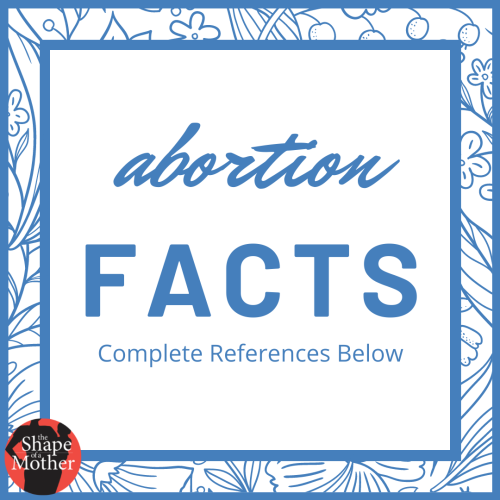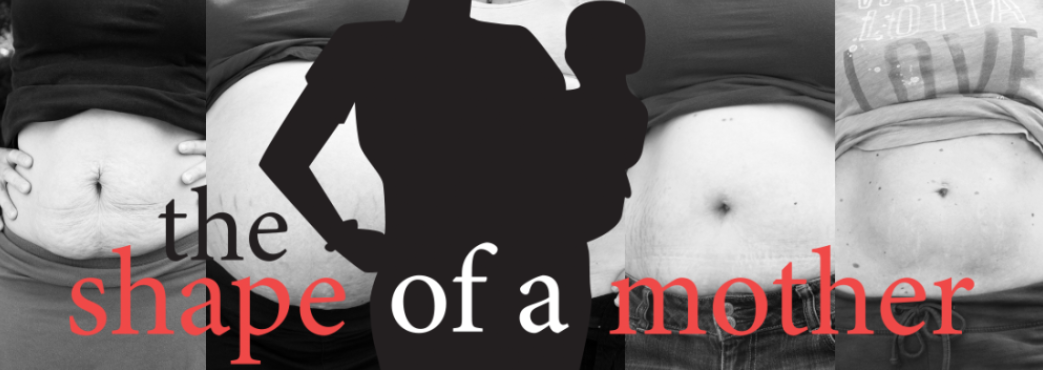
Find this in a flyer for your office or clients, or as a social media post for your audience here.
Fast Facts
It’s not just about women.
Please remember that trans men and non-binary folx also need abortions.
According to the Guttmacher Institute, “We estimate that 462 to 530 TGNB [transgender, non-binary] individuals obtained abortions in 2017 and that 23% of clinics provide transgender-specific care (8).”
Methods
In clinic abortions work more than 99% of the time (4).
Medical abortions (medication):
There are a few contraindications regarding medical abortion so consult your health care provider first. Dosages are effective for people of all weights (13).
But it stops a beating heart?!
Not really. At the time most abortions are performed, there is no “heart,” just a few functioning/beating cells that may one day become a heart. Recent research suggests that the heart is not complete in its anatomy until the 20th week of gestation (5). The argument that abortion “stops a beating heart” is a manipulative tactic that aims to distract you from the science.
But doesn’t it hurt the fetus??
Nope! Not at all in the vast majority of abortions.
According to the ACOG: “Rigorous scientific studies have found that the connections necessary to transmit signals from peripheral sensory nerves to the brain, as well as the brain structures necessary to process those signals, do not develop until at least 24 weeks of gestation. . . . “In fact, the perception of pain requires more than just the mechanical transmission and reception of signals. Pain. . . ‘requires conscious recognition of a noxious stimulus.’ This capacity does not develop until [28 wks] at the earliest’ (7).”
But can’t abortion cause depression?
According to the American Psychological Association,
Furthermore, “Abortions don’t cause depression, although women who have depression and anxiety may be more likely to have abortions (12).”
“It’s totally normal to have a lot of different emotions after your abortion. Everyone’s experience is different, and there’s no “right” or “wrong” way to feel. Most people are relieved and don’t regret their decision. Others may feel sadness, guilt, or regret after an abortion. Lots of people have all these feelings at different times (4).”
Why do people have later abortions?
In addition to the heartbreaking stories of parents who intended to have a child, but were forced to end a pregnancy due to health complications on the part of the fetus or parent, there are many reasons why someone may delay an abortion beyond 6 or 12 weeks.
Lack of Access to Care: In 2014, some 90% of U.S. counties lacked an abortion clinic, and five states had only one (6).
If someone has to travel for an abortion, they may need time to save money for hotel, food, and gas.
Cost: lack of access to abortions disproportionately affects low income and people of color.
So how DO we lower the abortion rate?
Access to effective birth control and sex education. The vast majority of abortions are because of unplanned pregnancies. Preventing unplanned pregnancies in the first place, therefore, lowers abortion rates (8). The Guttmacher Institute found exactly that to be true (9). Between 17-53% of people live in contraception deserts, depending on the state with people of color and low-income folx being more likely to live in one of these areas (10).
Bodily Autonomy
In the United States, a hospital cannot use the organs of a patient who dies or arrives dead without express consent.
One person can save up to EIGHT lives through organ donation. But only if they, or their next of kin, expressly consent to an anatomical gift (organ donation). Pregnancy is a major physiological event that can lead to permanent health complications or even death. It is unethical to demand someone complete a pregnancy they do not want. When abortions are outlawed, a corpse has more bodily autonomy than a person with a uterus.
Works Cited
1. “CDCs Abortion Surveillance System Faqs.” Centers for Disease Control and Prevention, Centers for Disease Control and Prevention, 25 Nov. 2020, https://www.cdc.gov/reproductivehealth/data_stats/abortion.htm.
2. “Key Facts on Abortion.” Amnesty International, 20 Apr. 2021, https://www.amnesty.org/en/what-we-do/sexual-and-reproductive-rights/abortion-facts/.
3. “Preventing Unsafe Abortion.” World Health Organization, World Health Organization, 25 Sept. 2020, https://www.who.int/news-room/fact-sheets/detail/preventing-unsafe-abortion.
4. What Facts about Abortion Do I Need to Know?” Planned Parenthood, https://www.plannedparenthood.org/learn/abortion/considering-abortion/what-facts-about-abortion-do-i-need-know.
5. Eleftheria, Pervolaraki, et al. “Antenatal Architecture and Activity of the Human Heart.” Royal Society Publishing, 6 Apr. 2013, https://royalsocietypublishing.org/doi/full/10.1098/rsfs.2012.0065#d3e633.
6. Jerman, Jenna, et al. “Barriers to Abortion Care and Their Consequences for Patients Traveling for Services: Qualitative Findings from Two States.” Guttmacher Institute, 8 Sept. 2020, https://www.guttmacher.org/journals/psrh/2017/04/barriers-abortion-care-and-their-consequences-patients-traveling-services.
7. “Fetal Pain.” ACOG, https://www.acog.org/advocacy/facts-are-important/gestational-development-capacity-for-pain
8. Dastagir, Alia E. “Fewer Women Are Having Abortions. Why?” USA Today, Gannett Satellite Information Network, 17 June 2019, https://www.usatoday.com/story/news/nation/2019/06/13/abortion-law-fewer-women-having-abortions-why/1424236001/.
9. Dreweke, Joerg. “New Clarity for the U.S. Abortion Debate: A Steep Drop in Unintended Pregnancy Is Driving Recent Abortion Declines.” Guttmacher Institute, 21 Sept. 2018, https://www.guttmacher.org/gpr/2016/03/new-clarity-us-abortion-debate-steep-drop-unintended-pregnancy-driving-recent-abortion.
10. TM;, Kreitzer RJ;Smith CW;Kane KA;Saunders. “Affordable but Inaccessible? Contraception Deserts in the US States.” Journal of Health Politics, Policy and Law, U.S. National Library of Medicine, https://pubmed.ncbi.nlm.nih.gov/32955562/.
11. “Abortion and Mental Health.” American Psychological Association, https://www.apa.org/pi/women/programs/abortion.
12. Fox, Maggie. “Abortion Does Not Cause Depression, New Study Finds.” NBCNews.com, NBCUniversal News Group, 31 May 2018, https://www.nbcnews.com/health/health-news/abortion-does-not-cause-depression-new-study-finds-n878706.
13. Strafford, Melissa A, et al. “Relationship of Obesity to Outcome of Medical Abortion.” American Journal of Obstetrics and Gynecology, 29 Dec. 2008, https://www.ajog.org/article/S0002-9378(08)02029-2/fulltext.
